Technologies
Odysseus Lunar Lander Sent a Farewell Photo of Earth: Now What?
All about the first US moon mission in more than 50 years. No astronauts, but this effort will help them return.
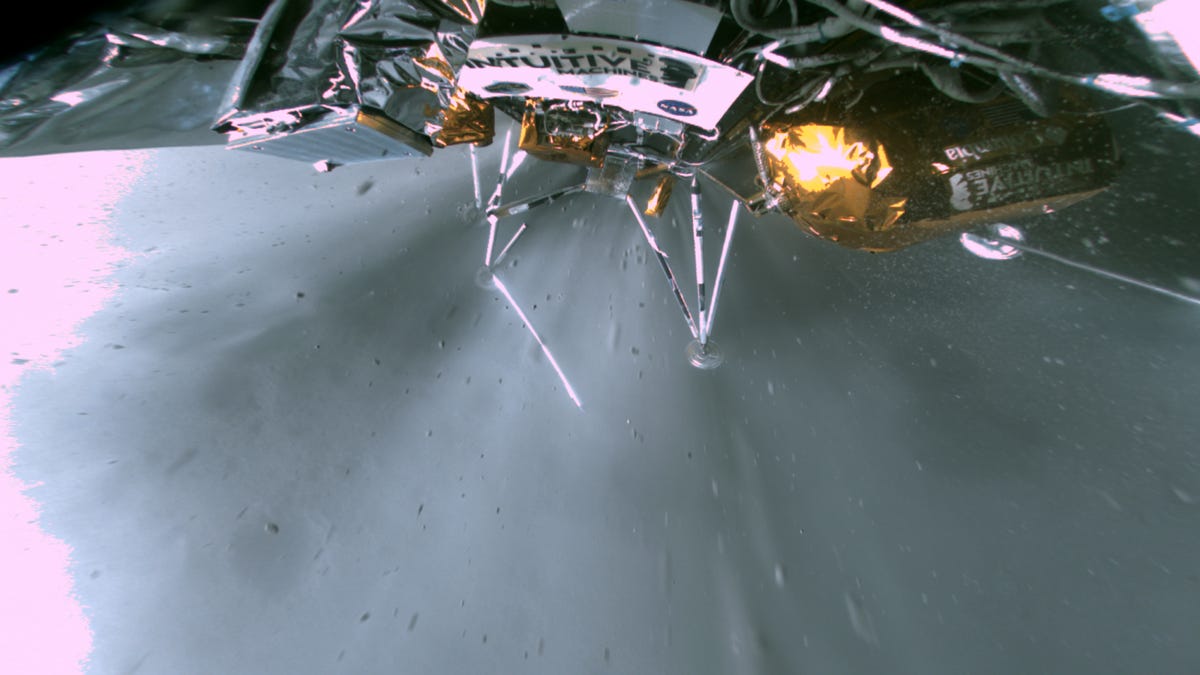
Goodbye, Odie. On Thursday, Houston-based space-exploration company Intuitive Machines bade farewell to Odysseus, the lunar lander that took the US to the moon for the first time in more than 50 years. The lander had been there for a week and will remain on the moon’s surface, inoperable but remembered as a historic achievement in the annals of lunar exploration.
«Before its power was depleted, Odysseus completed a fitting farewell transmission,» the company wrote in a tweet shared on Thursday. «Received today, this image from February 22nd showcases the crescent Earth in the backdrop, a subtle reminder of humanity’s presence in the universe. Goodnight, Odie. We hope to hear from you.»

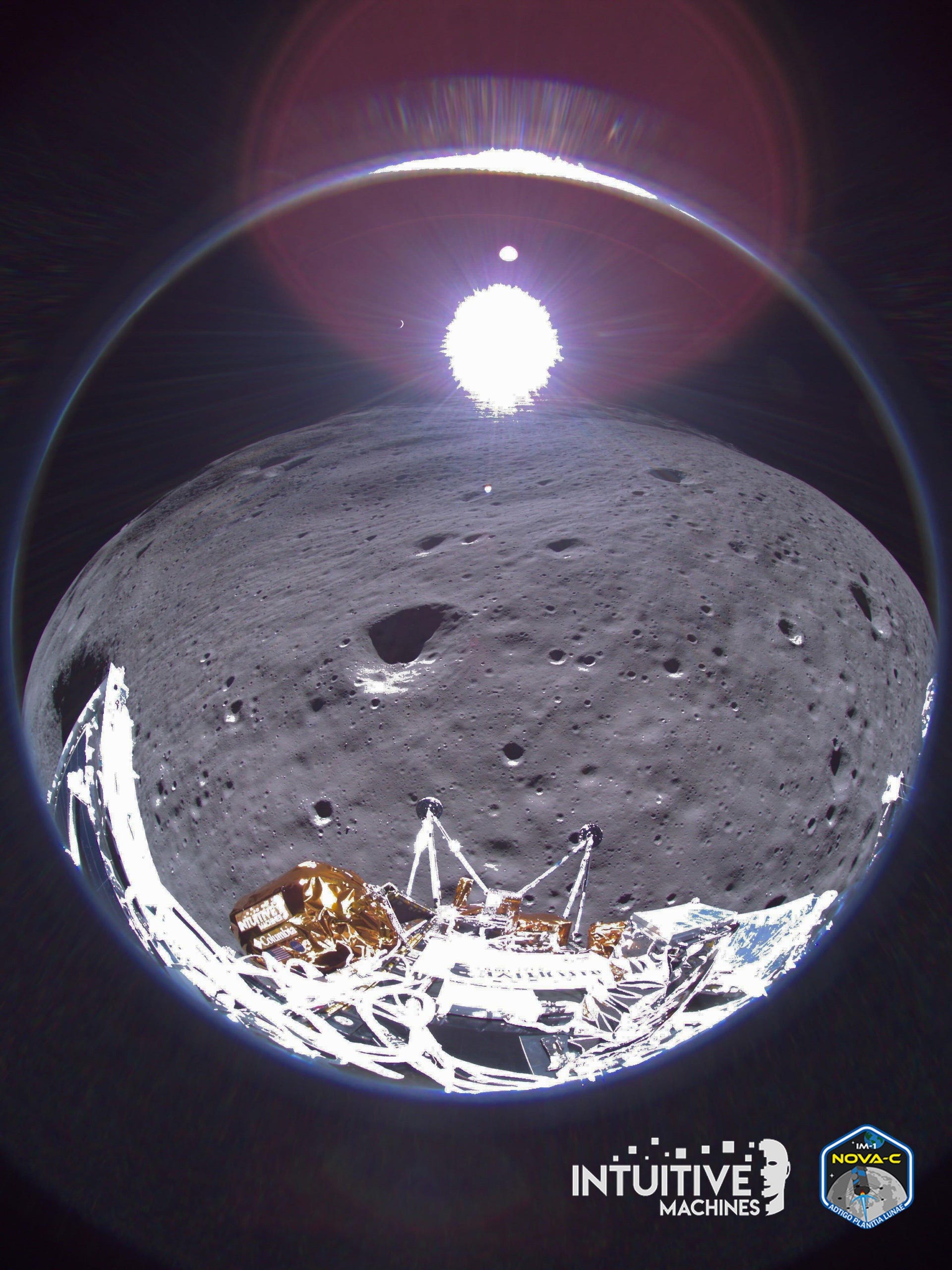
Intuitive Machines successfully landed Odysseus on the moon’s surface Feb. 22, after a seven-day space trek by the craft. It’s the first time an American vehicle has been on the surface of the moon since Apollo 17 in 1972. But unlike the Apollo missions, which were entirely operated by NASA, this time the space agency hired the private company to send a lander to the moon.
The United States is the only country to ever put humans on the moon, but its focus shifted away from the lunar surface in the 1970s. In recent years, though, NASA has been planning a return, through its Artemis mission, which right now is scheduled to put boots back on the moon no earlier than September 2026 (several years after the original target date). Meanwhile, the space agency has been working with private companies like Elon Musk’s SpaceX and Jeff Bezos’ Blue Horizon on a variety of missions, including through its Commercial Lunar Payload Services initiative. The Odysseus mission was under CLPS auspices.
Here’s what to know.
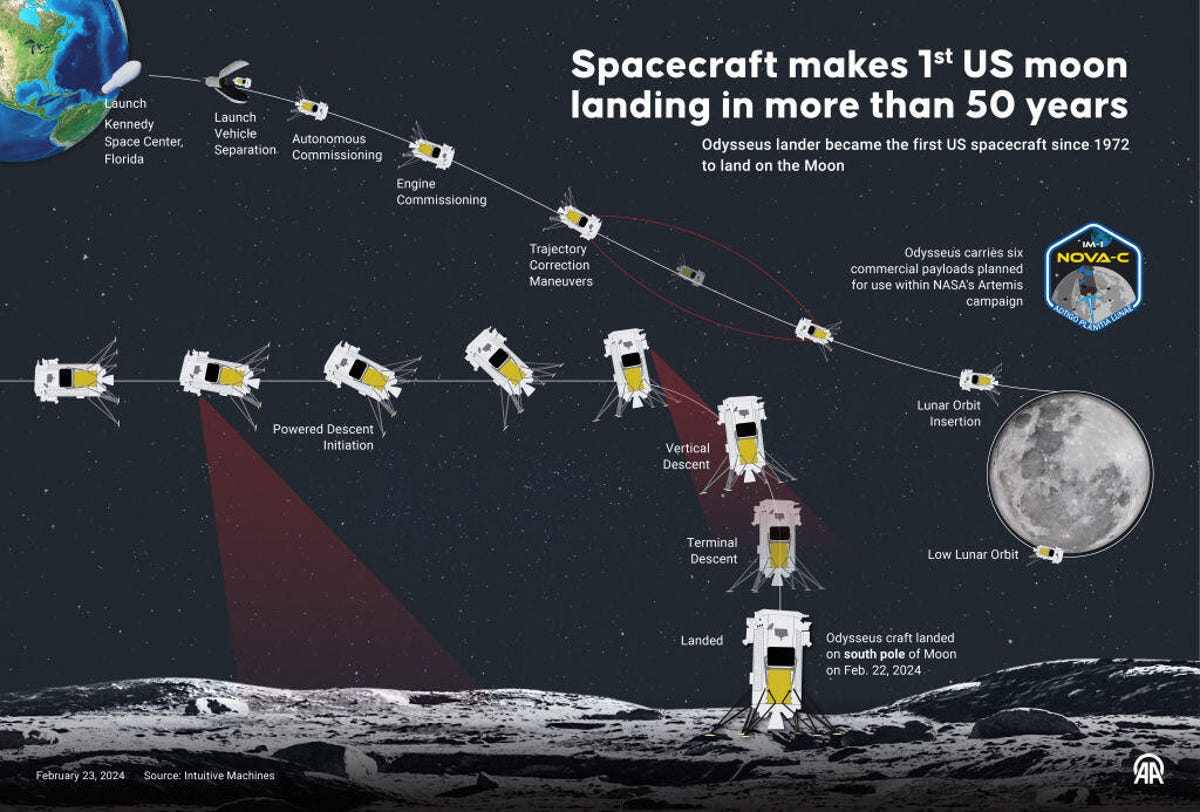
Odysseus moon mission
The Odysseus mission was endorsed by NASA to collect scientific data from the moon’s surface. The lander, known internally as the Nova-C lander — and fondly to Intuitive employees as «Odie» — is about the size of a phone booth. It landed in the South Pole region of the moon called Malapert A at 6:24 p.m. ET on Feb. 22.
Odie was equipped with a host of instruments to investigate the lunar surface and radio waves and send photos back to the US, NASA said. The lander also featured a retroflector array that helped NASA identify its location and keep track of where to send other autonomous vehicles during future missions.
The launch and landing part of the mission lasted seven days, but it was fraught with drama after the Intuitive Machines team discovered that the lander’s range-finding system was inoperable and that the team needed to recode Odysseus to use a different range-finding system to pull off a safe landing. What’s worse, the team found that Odysseus was descending at a rate much faster than expected, increasing the likelihood of a crash. Luckily, that didn’t happen.
What to know about Intuitive Machines
Intuitive Machines is the first benefactor of the NASA Commercial Lunar Payload Services program, which the agency started in 2018. NASA researched whether to build and send a lunar lander of its own to the moon. But the space agency determined it would be cheaper, with potentially greater chances of success, to instead pay commercial companies to handle the task.
NASA paid Intuitive Machines $118 million to send Odysseus to the moon. The agency hoped to learn more about the lunar surface and where to eventually send humans back to the moon.
About the Odysseus technology
Odysseus carried several instruments for learning more about the moon and space.
En route to the moon, NASA instruments aboard the craft measured its consumption of cryogenic fuel, and while Odysseus was touching down, another instrument tested the dust the lander kicked up.
Once Odysseus was on the moon, additional technologies were used to evaluate the lunar surface. One, called the Lunar Node 1 Demonstrator, focused on autonomous navigation to show how future landers could traverse the surface. A Laser Retroflector Array conducted range-finding and distance measurements. And a radio wave instrument analyzed the moon’s surface radio waves to determine how’d they’d affect the work of humans conducting science there. Also, four cameras captured images of the lander’s environment.
Tipsy Odysseus
Intuitive Machines confirmed that Odysseus landed off-kilter after it apparently got one of its feet caught on something. The company now believes the lander is either tilted on a rock or lying on its side on the slope of a hill.
Despite the less-than-ideal positioning, Intuitive Machines was able to communicate with Odysseus and its sensors remained operational.
Short life span
Though Odysseus spent just a week on the lunar surface, that’s all it gets. The lander was slated to be operational for only nine to 10 days. After that, Intuitive Machines knew the sun would set on the landing site, and Odysseus’ radios and batteries can’t survive the extremely cold lunar nights.
What’s next
The Odysseus lander mission is just the first in a string of NASA missions that aim at eventually getting astronauts back to the moon. Like Odysseus, future landers will explore the lunar surface, scout ideal locations for landing astronauts, and perform scientific research.
For its part, Intuitive Machines isn’t done on the moon. The Odysseus mission may be over, but the company is already working on two other moon lander missions, slated to launch later this year.
Technologies
iPhone 17 Preorders Spike and Overall Phone Sales Aren’t Slowing Down Despite Tariffs
Global smartphone shipments saw a notable increase in the third quarter of 2025. Plus, preorders for Apple’s new iPhone 17 beat out the iPhone 16.
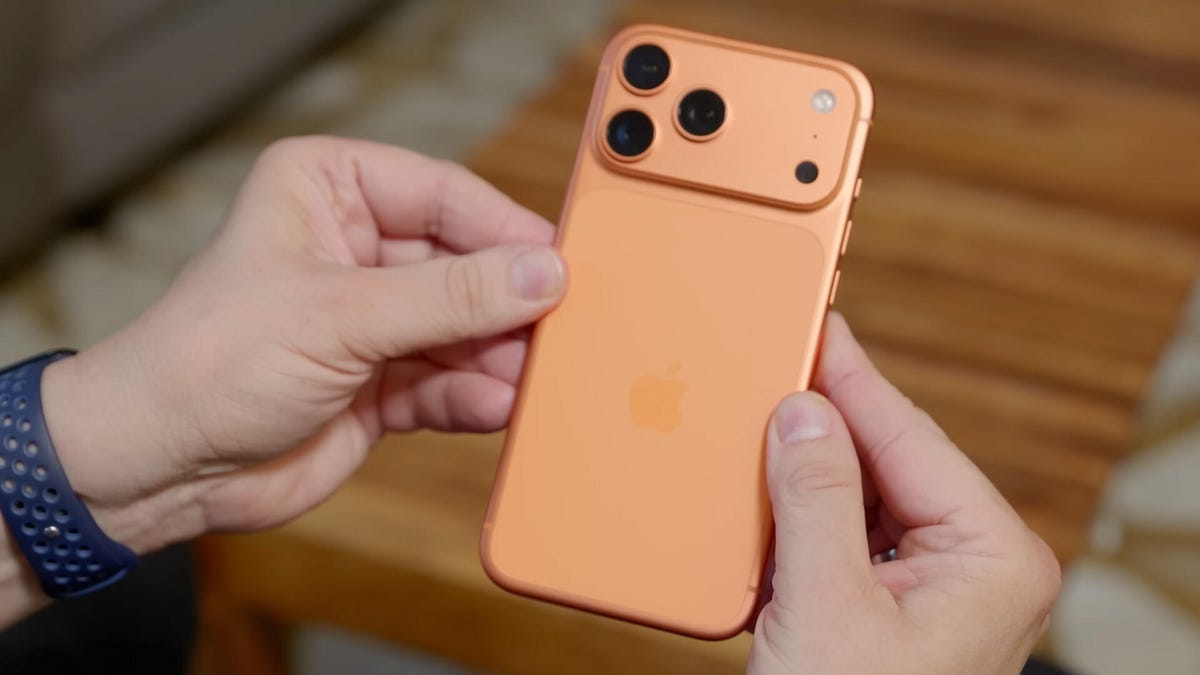
Despite tariffs and market uncertainty, global smartphone shipments increased 2.6% in the third quarter of 2025, compared to the same time last year, according to the International Data Corporation. Additionally, preorders for the iPhone 17, which launched last month, outpaced last year’s iPhone 16.
These increased sales include premium phones like the latest iPhones and Samsung foldables, suggesting yet again that pricier phones still sell in periods of economic strain. It’s a remarkable achievement, says IDC senior research director Nabila Popal, citing shrewd financing options as the reason people keep buying these high-end phones, which cost anywhere from $800 to nearly $2,000.
«[Phone makers] have mastered the art of innovation not only in hardware and software to entice upgrades but also in removing purchase friction. They have flawlessly combined cutting-edge devices with innovative financing models and aggressive trade-in programs that make the upgrading decision a ‘no-brainer’ for consumers,» Popal said in an IDC press release.
Apple sold 58.6 million iPhones this quarter, an increase of 2.9% over the same period in 2024, with more preorders for the iPhone 17 series than its predecessor. But Samsung wasn’t far behind, with its Galaxy Z Fold 7 and Galaxy Z Flip 7 selling better than all of the company’s prior foldables. The company still reigns atop the phone market with 61.4 million phones sold, representing 19% of the market in the third quarter of this year — an increase of 6.3% from the same period last year. Meanwhile, Apple lands slightly behind Samsung with 18.2% market share this quarter.
The other phone makers trailing Apple and Samsung are, in order: Xiaomi, with 13.5% of the market; Transsion, with 9%; and Vivo with 8.9%. The remaining companies in the phones industry, from Chinese stalwarts like Oppo and Honor to Motorola and Google, make up the remaining 31.4% of the market for the quarter. All told, 322.7 million phones were sold, up from 314.6 million in the third quarter of 2024, according to IDC.
IDC’s findings for the third quarter continue the small but steady growth of phone sales over the year, including a modest 1% increase in the preceding three months — which includes the April deadline when President Donald Trump unveiled sweeping tariffs. In the second quarter, IDC cited midrange devices like Samsung’s Galaxy A36 and other phones that started incorporating AI. But even persistent tariffs haven’t slowed down people’s appetites for pricier phones in the third quarter.
Technologies
Today’s NYT Mini Crossword Answers for Tuesday, Oct. 14
Here are the answers for The New York Times Mini Crossword for Oct. 14.
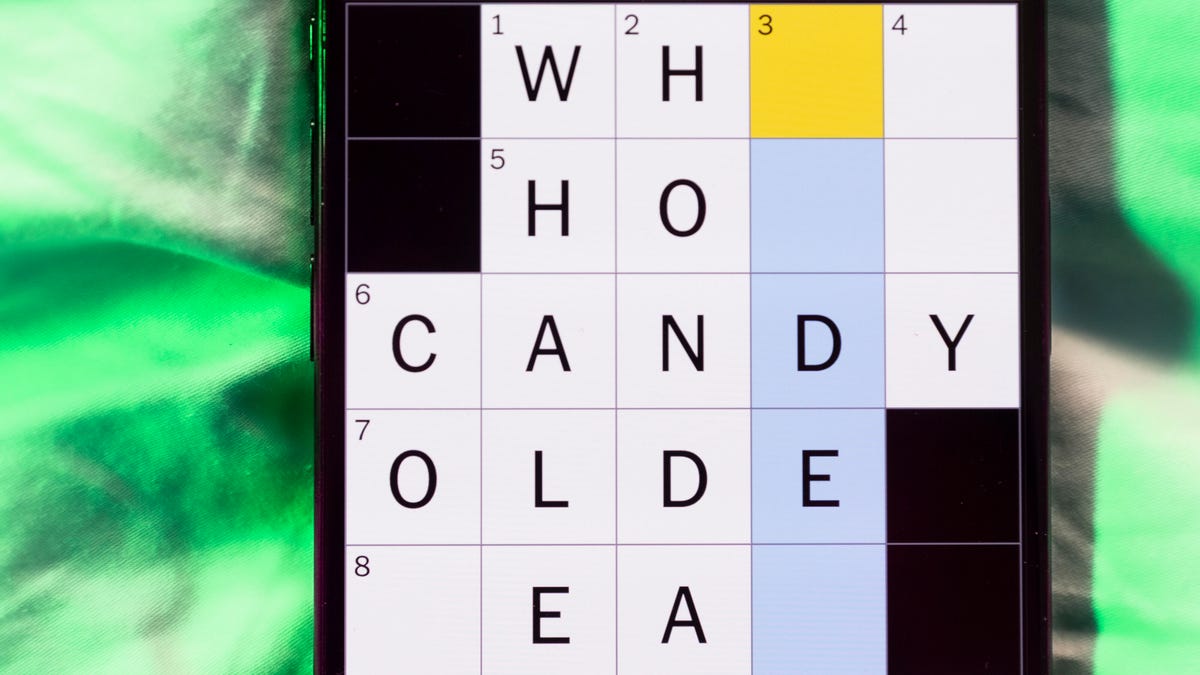
Looking for the most recent Mini Crossword answer? Click here for today’s Mini Crossword hints, as well as our daily answers and hints for The New York Times Wordle, Strands, Connections and Connections: Sports Edition puzzles.
Today’s Mini Crossword has an odd vertical shape, with an extra Across clue, and only four Down clues. The clues are not terribly difficult, but one or two could be tricky. Read on if you need the answers. And if you could use some hints and guidance for daily solving, check out our Mini Crossword tips.
If you’re looking for today’s Wordle, Connections, Connections: Sports Edition and Strands answers, you can visit CNET’s NYT puzzle hints page.
Read more: Tips and Tricks for Solving The New York Times Mini Crossword
Let’s get to those Mini Crossword clues and answers.
Mini across clues and answers
1A clue: Smokes, informally
Answer: CIGS
5A clue: «Don’t have ___, man!» (Bart Simpson catchphrase)
Answer: ACOW
6A clue: What the vehicle in «lane one» of this crossword is winning?
Answer: RACE
7A clue: Pitt of Hollywood
Answer: BRAD
8A clue: «Yeah, whatever»
Answer: SURE
9A clue: Rd. crossers
Answer: STS
Mini down clues and answers
1D clue: Things to «load» before a marathon
Answer: CARBS
2D clue: Mythical figure who inspired the idiom «fly too close to the sun»
Answer: ICARUS
3D clue: Zoomer around a small track
Answer: GOCART
4D clue: Neighbors of Norwegians
Answer: SWEDES
Technologies
Watch SpaceX’s Starship Flight Test 11
-

 Technologies3 года ago
Technologies3 года agoTech Companies Need to Be Held Accountable for Security, Experts Say
-

 Technologies3 года ago
Technologies3 года agoBest Handheld Game Console in 2023
-

 Technologies3 года ago
Technologies3 года agoTighten Up Your VR Game With the Best Head Straps for Quest 2
-

 Technologies4 года ago
Technologies4 года agoVerum, Wickr and Threema: next generation secured messengers
-

 Technologies4 года ago
Technologies4 года agoGoogle to require vaccinations as Silicon Valley rethinks return-to-office policies
-

 Technologies4 года ago
Technologies4 года agoBlack Friday 2021: The best deals on TVs, headphones, kitchenware, and more
-

 Technologies4 года ago
Technologies4 года agoOlivia Harlan Dekker for Verum Messenger
-

 Technologies4 года ago
Technologies4 года agoiPhone 13 event: How to watch Apple’s big announcement tomorrow
